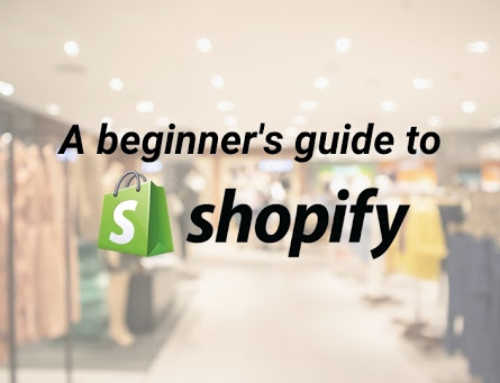Have you found your personal space slowly being engulfed by stock? Where did your elbow room go, and since when did shelving become your biggest expenditure? Your business is outgrowing your existing space but you’re not yet financially ready to rent further storage. If this sounds familiar, dropshipping might be the right solution: all the products, without the exorbitant need for space. But what’s the right way to go about it? In today’s blog, we’re here to help you decide if dropshipping is your best option, and how to go about making your first steps.
Dropshipping: Speed recap.
Ok, we know you know, but just so we’re all clear on the terminology, let’s summarize what dropshipping actually is.
In most standard online shop offerings, the seller has a stock of products in their home or warehouse and can package it up and mail it to the buyer. In the dropshipping model of retail, the seller does not have physical products in stock. Instead, they purchase merchandise from a dropshipping company, which ships directly to the customer. You, as the seller, do not have to have stock shipped to you first or handle the packaging and shipping yourself.
Sounds like a breeze, right? Well, if you go about it the right way, it certainly can be. But there are a few minefields to navigate along the way. First off, you need to establish if dropshipping really is right for you.
Is Dropshipping Right For You?
Dropshipping is a great option for budding entrepreneurs looking to find their niche. It requires a lower amount of capital investment, which gives you some room for trial and error while you find out what works.
It’s also a great opportunity for people with established eCommerce stores to complement their existing range.
As a bonus, with the dropshipping model you don’t even have to risk standing in line at the post office during a global pandemic (let’s hope that benefit quickly becomes outdated).
But don’t be fooled into thinking this is your golden ticket. While it might seem like it requires little effort, the profit margins are razor-thin, and if you aren’t already established, you’ll need to invest a fair share of time and money in developing and marketing your brand.
To make it a success, you’ve got to be prepared to put in the legwork, and you’ve got to get smart. We’re here to help you with your first steps. Ready?
1. Know your niche
You’ve identified a gap in the market. Research to make sure your business idea rests on more than just a hunch. If you have an investment idea in mind, find out exactly who wants to buy it (buyer persona), and how much they’d be willing to buy it for. Is there enough interest and are the price points reasonable?
Once you’ve found your customer base, get to know them inside out. If you’re going to sell to them you need to know what resonates with them. What motivates their purchasing behaviors? What’s most important to them? Quality, affordability, sustainability, brand reputation, packaging, delivery times, etc. You want to know your customer base better than your bestie.
2. Find a supplier you’d want to bring home to your mom
Shopify, Wholesale2B, AliExpress…the list of dropshipping suppliers is endless. They range in reputability, and scamming is unfortunately rife. Partnering with the wrong supplier can spell absolute disaster: you have no control over their processes, or their reliability, effectively putting you at their mercy. Consider finding the right supplier for your biggest commitment… well, maybe aside from marriage and kids.
Research as thoroughly as you can before you take the leap. Look out for:
- Good communication
- Production capabilities and product turnaround
- Prices, including monthly partnership fees
- What do the reviews say?
3. Invest in a good website
Now you’ve got the goods, the next step is finding the right platform to sell them on. You want your eCommerce website to run smoothly, be easy to navigate, and have secure payment options. You also need to develop a stellar brand that appeals to your potential customers.
If you have a good eye for design and you know some UX basics, you can start by building your own e-commerce store through a platform like Shopify. But if you have some capital set aside and you don’t want to leave it to chance, invest in professional brand and web building services from the off and give your dropshipping business the best possible chance right from the off.Once you’ve built your website, it’s time to upload good-quality product images and descriptions.
4. Get customers
You have a great product, you have the means of selling, and now you need some buyers for that fantastic product! Customer acquisition doesn’t have to be a chore. A social media ad campaign is an effective way to attract clients and build a trustworthy brand persona. Facebook and Instagram both allow you to target audiences very specifically. Voila, a large potential customer base, right at your fingertips.
5. Keep analyzing, keep learning
It isn’t enough to set up your shop, get your first customers, and walk away whistling with your hands in your pockets. Google Analytics is a vital tool for analyzing your customer base. You can learn more about who they are and how they interact with your product offering. Knowledge is power, and Google Analytics makes that power easily accessible.
How can jdp help?
Dropshipping may be the easiest way to sell online, but you could still use the extra help to make sure your business idea is solid. We know that working with a marketing company is a big exercise in trust. Too often, this outsourcing can lead to superficial changes that do not align with your business goals. It’s like re-painting your living room without noticing that the foundation is cracked.
We offer a full audit, analysis, and diagnosis of your current business to identify the changes that can offer the greatest positive impact. We don’t just make your business roadworthy, we set you up to make your business go far and overtake your main competitors. We are looking forward to working with you and taking your business to the next level.


![How to Grow Your Shopify eCommerce Store Using Content Marketing [UPDATED 2022]](https://jdperoro.com/wp-content/uploads/2020/12/How-to-Grow-Your-Shopify-eCommerce-Store-Using-Content-Marketing-500x383.jpg)


